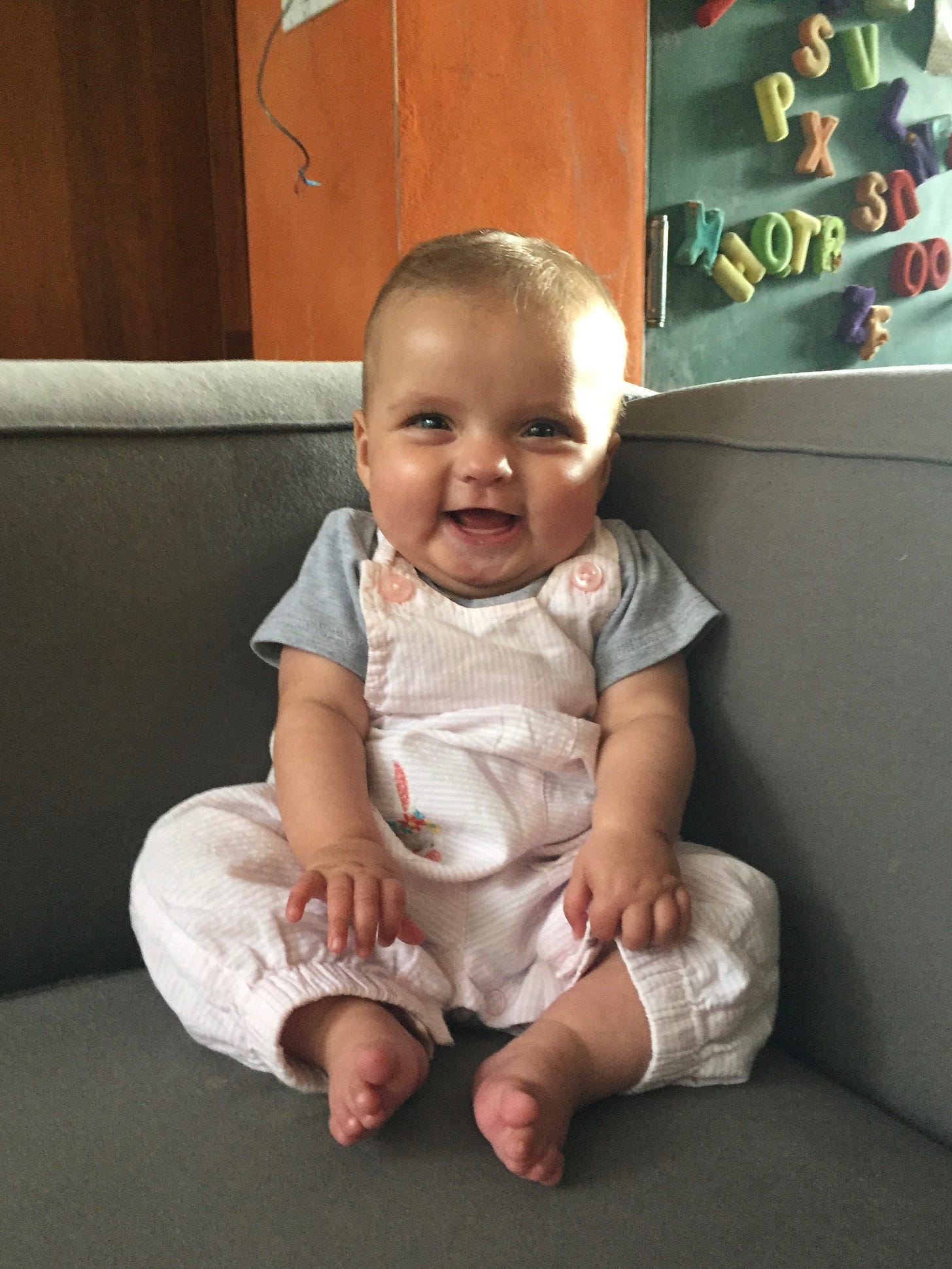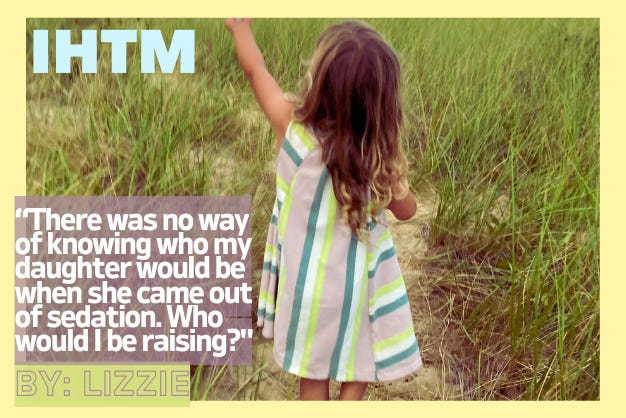Should You Find Yourself On The Ninth Floor Of New York-Presbyterian Children's Hospital On Mother's Day
Where to find the good ice, the secret Oreos, and the will to carry on when your child is one floor away from the afterlife. (Or, The PICU Survival Guide nobody would ever want.)
Welcome to your weekends, sweeties.
I hope you get so much out of this story from new AJPT contributor Lizzie today, as I did and continue to. I want to greatly thank her for it, and let’s all convene in the comments, as usual, to talk more.
Love love you always,
Jane
By Lizzie Simon
One morning, well before dawn, when my daughter was about seven months old, I woke up and realized she hadn’t cried out to be fed in the night. For a moment, I hoped that it meant she was becoming a baby who would sleep for nice, long stretches. Then I was concerned. She had had some kind of bug the day before and had thrown up before going to sleep.
I went into her room to find her sleeping soundly in her crib. When I lifted her out, however, she barely stirred. Her body was droopy in a way it had never been before, and her skin was grey. Nervous, I brought her over to my husband so he could see her, and we decided immediately that I would take her in an Uber to the ER while he stayed home with our older daughter and his son, who were still sleeping. This was around five in the morning. Mercifully, there was no traffic.
Our daughter was born with two heart conditions, one of which causes unpredictable arrhythmias and one of which results in a weak squeeze of the heart. The uniqueness of her situation — genetic testing revealed her condition as Long QT 15, for which there were only 64 other documented cases in the world — made her popular with specialists. For us, it meant vast unknowns.
By the time I brought her into the ER, she seemed even greyer, even droopier. I was spooked, because up until that morning, she had seemed perfectly great.

Here’s a moment I’ll never forget: Lugging my daughter in her car seat into the entrance of the ER that morning and placing her on the intake desk. It made the kind of heavy thunk that every parent probably remembers, the weight of their baby in a car seat, being hoisted to the top of a table. The nurse took one look at her and grabbed her with the force of ten million nurses. Every alarm rang, doors flung open, and doctors and nurses crawled in from every corner, like an infestation of ants, to one hospital bed—the one my daughter was in.
An administrator asked: “Do we have permission to do all interventions?”
I said, “Yes.”
Should you find yourself in a children’s hospital, and someone asks you this, it is a sign that things are not going well. A nurse guided me to a hallway where she and a doctor asked for the details. They needed the story. There wasn’t much of one to tell, but I was pulled a half dozen times into corridors that morning to tell what I knew.
I’d been a journalist for years. I could condense information quickly, something doctors and nurses usually appreciated. How does a parent, for whom English is a second language, do this? I often wonder. On this morning, though, it felt more like an interrogation. Maybe because I was interrogating myself: Why hadn’t I woken her in the night to see how she was doing? Was I so desperate for a good night’s sleep that I had put her life at risk? Was she dying there in that hospital bed?
I learned that she was in cardiogenic shock, which meant that every organ inside her body (yes, every) was moving towards death. The doctors and nurses stabilized her —she wasn’t going to die right there and then — because they sedated, hydrated, and intubated her. They said they would keep her sedated and intubated in case they needed to do an emergency procedure, so that they wouldn’t have to wait even a minute.

From day one of her life, we were trained to prepare for an emergency. One of the symptoms of her condition is unexpected death. One of the symptoms is unexpected death. So we had a portable AED and we were trained on how to defibrillate a baby in cardiac arrest and that AED went everywhere she went. To the grocery store, to the playgrounds, down the dunes to the beach, on airplanes. We were prepared for an emergency.
“Should you find yourself on the ninth floor at New York-Presbyterian Children’s Hospital, it’s not a good sign. The ninth floor is the brink. It’s closer to the afterlife than 99% of places on Earth.”
It honestly never occurred to me that there could be other emergencies, too. Why didn’t anyone tell me that a virus could bring her to the brink of death? I asked. I wasn’t given a satisfactory response. But I was becoming aware of the answer, and it was like being flung into a pile of rocks. Just like three million other children in America, she was a “medically fragile” kid. Meaning, yeah there would be other emergencies —too many to convey— and comprehensive preparedness was impossible. Later, with blood work, they found she had contracted two ordinary viruses that pushed past the limits of her heart’s strength.
Then they moved us up to the pediatric intensive care unit on the ninth floor.
We had learned about the ninth floor over the summer, when we’d taken her to a revered cardiologist. He thought she would likely need a heart transplant and advised us to have her under the care of the team at New York Presbyterian, as they do more pediatric heart transplants per year (about 30) than any other hospital in the country. (With a heart transplant, I learned, you want to be with the team that does the most of them. With a rare illness, you want to be baffling the most knowledgeable people.)
Should you find yourself on the ninth floor at New York-Presbyterian Children’s Hospital, it’s not a good sign. The ninth floor is the brink. It’s closer to the afterlife than 99% of places on Earth. It also meant this was probably the emergency that would put her on the transplant list. The one that would have us waiting for somebody on the East Coast’s baby, a baby of about equal size to my baby, to die.
And to die in such a way that left the heart intact.
Keep reading with a 7-day free trial
Subscribe to Another Jane Pratt Thing to keep reading this post and get 7 days of free access to the full post archives.


